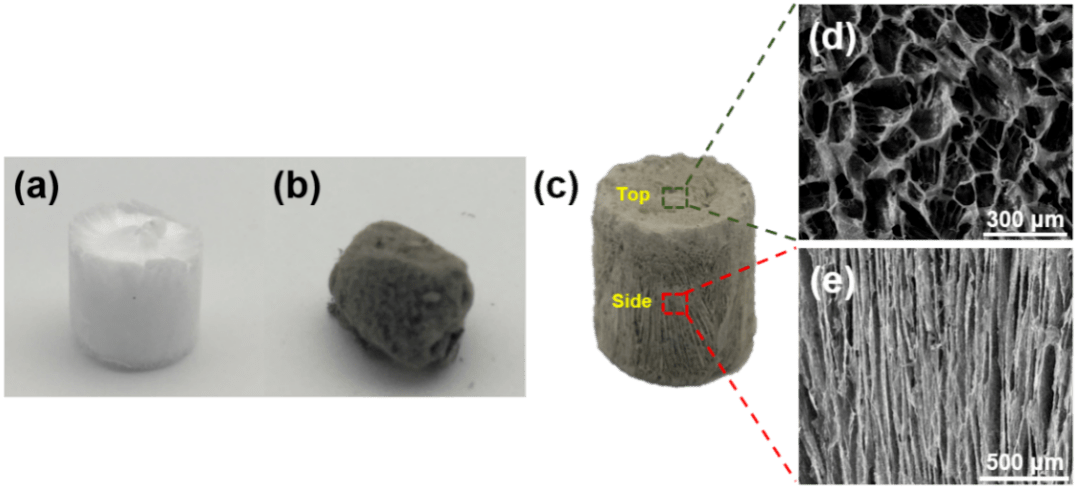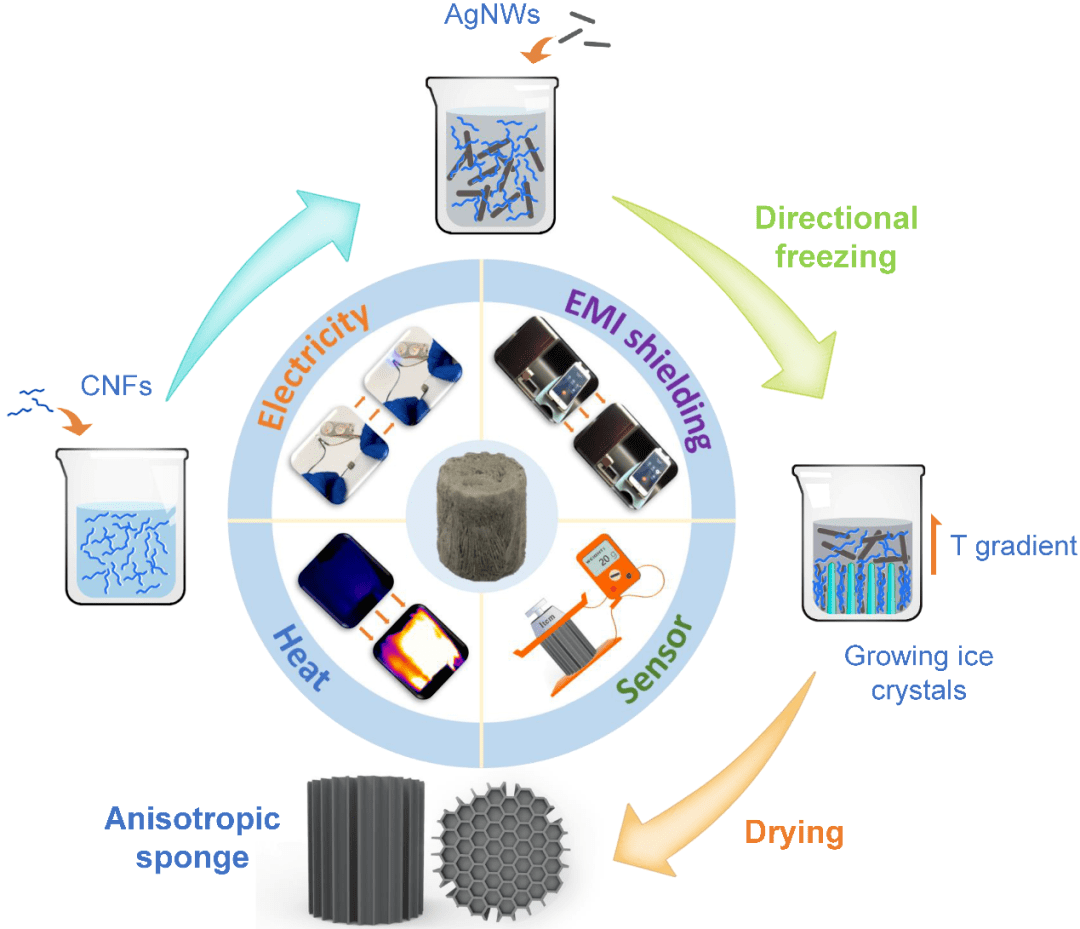Nanjing Forestry University: Research progress of nano-cellulose aerogel and its composite materials
QQ Academic Group: 1092348845
Detailed
In recent years, nano-cellulose-based porous aerogel/sponge has been used in adsorption, heat insulation, and storage due to its advantages of low density, high porosity, and high surface activity and biocompatibility of traditional porous materials. Fields such as energy and biomedicine show broad application prospects. However, most of the current nanocellulose porous materials are isotropic, and the disorder of the pore structure cannot realize the rapid directional transmission of electricity, heat, and magnetism. At the same time, its long transmission path also reduces the application performance of the material.
Figure 1 (a) Ultralight nanocellulose aerogel; the topography and structure of the aerogel in (b) non-directional direction and (c) directional direction; (d) excellent compression resistance in the directional direction of the aerogel performance.

Figure 2 (a) Uniform nano-cellulose/silver nanowire mixed dispersion; (b) Nano-cellulose/silver nanowire composite nano-paper showing excellent conductivity and flexibility.
Utilizing the synergistic effect between nanocellulose and silver nanowires, on the one hand, the introduction of nanocellulose and oriented structures can help the dispersion of silver nanowires in the composite system, effectively maintaining the stability of the sponge matrix structure (Figure 3); On the other hand, the addition of silver nanowires realized the anisotropy of the electrical properties of the porous sponge, and also increased its mechanical properties to a certain extent (Figure 4).

Figure 3 (a) Nanocellulose sponge; (b) Silver nanowire sponge; (c) Anisotropic nanocellulose/silver nanowire composite porous sponge, and (d) non-directional direction and (e) directional direction The topography structure.

Figure 4 (a) Anisotropy of electrical properties of nanocellulose/silver nanowire composite porous sponge (left: non-oriented direction, right: oriented direction); (b) comparison of characteristics of composite porous sponge (d: oriented freezing , N: non-directional conventional freezing).
The excellent electrical properties make the composite sponge have excellent shielding and absorption effects on electromagnetic waves. As the content of silver nanowires increases, the absorption-based electromagnetic shielding effectiveness (EMI SE) of the sponge gradually increases, reaching more than 80 dB (Figure 5a). The reason for the excellent performance is that the assembly between the silver nanowires with high charge density and the porous sponge structure can efficiently absorb microwaves and dissipate energy. When the amount of silver nanowires added is 0.3 vol%, the non-directional and disorderly complex path hinders the propagation of electromagnetic waves and promotes internal absorption. EMI SE is higher than commercial requirements (20 dB); while the directional direction is regular and orderly Due to the difficulty of effectively blocking electromagnetic waves, the hole structure of the hole has poor shielding effectiveness, thereby achieving anisotropy in electromagnetic shielding performance (Figure 5b-c). Furthermore, the research group also simulated a practical application scenario, and the results showed that the anisotropic composite sponge can achieve selective shielding interference to the electromagnetic wave signal of the mobile phone (Figure 5d-e). This interesting phenomenon can provide new ideas for exploring the functional applications of nano-cellulose porous materials in the field of electromagnetic shielding.

Figure 5 (a) Electromagnetic shielding performance of composite porous sponges with different silver nanowire content in different directions (solid: non-directional direction, hollow: directional direction); (b,c) 0.3 vol% silver nanowire composite porous sponge Electromagnetic shielding performance in different directions; (d, e) Electromagnetic shielding application of composite porous sponge.
In addition, the author also explored the nanocellulose/silver nanowire composite porous sponge in anisotropic electric heating, pressure weighing sensor, etc., in order to promote the multifunctional application of nanocellulose porous materials Further development (Figure 6).

Figure 6 The versatility of nanocellulose porous sponge
The work was jointly completed by Nanjing Forestry University, Massachusetts Institute of Technology and Bayreuth University in Germany. It was recently published in "ACS Applied Materials & Interfaces" under the title "Wood-inspired Anisotropic Cellulose Nanofibril Composite Sponges for Multifunctional Applications" In the magazine.
Source: Mechanical Engineering Materials
This information is from the Internet for academic exchanges. If there is any infringement, please contact us and delete it immediately
- Previous: Qilu University of Tec
- Next: IF 26.8! A dual-action


 Academic Frontier
Academic Frontier